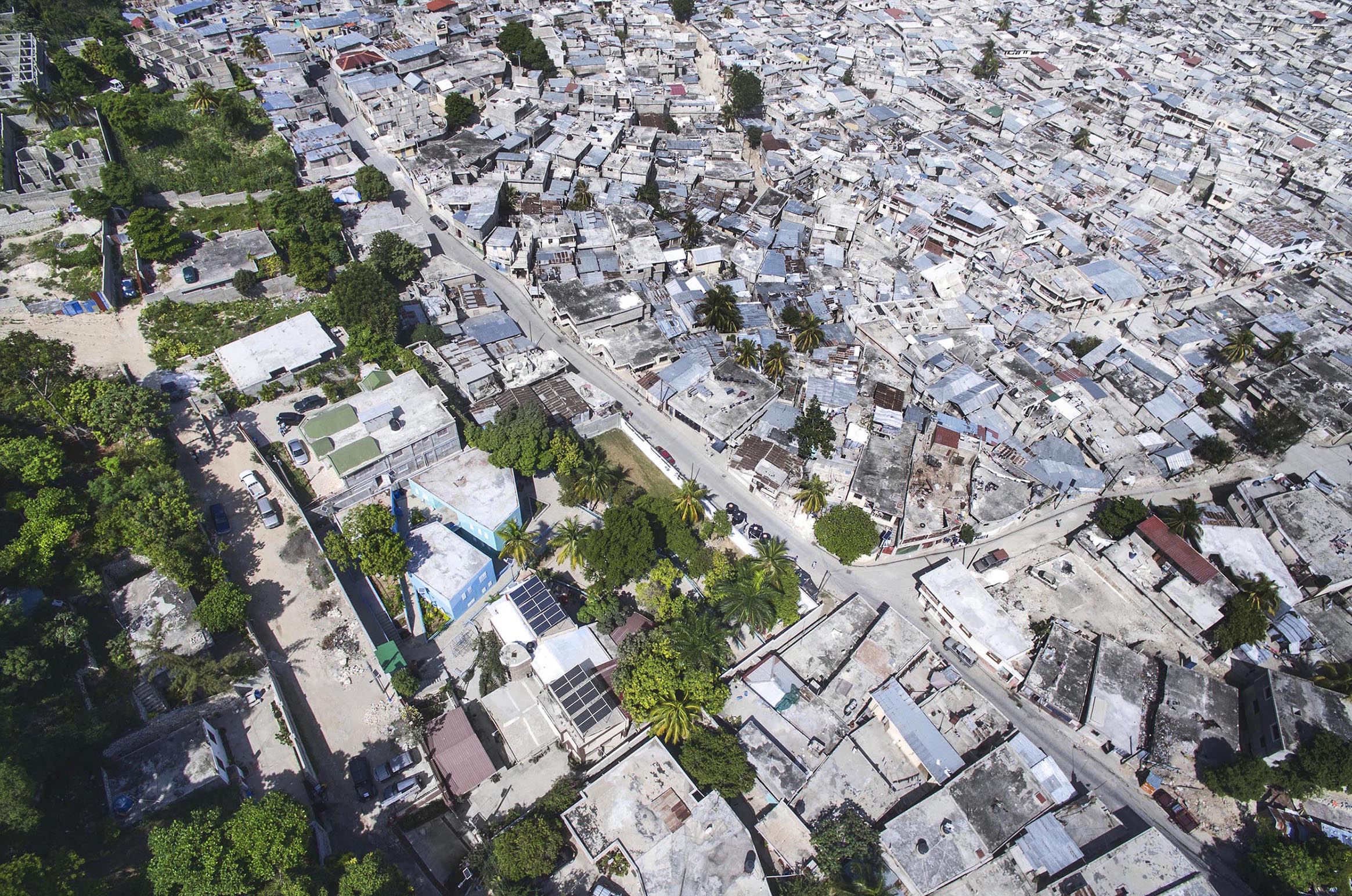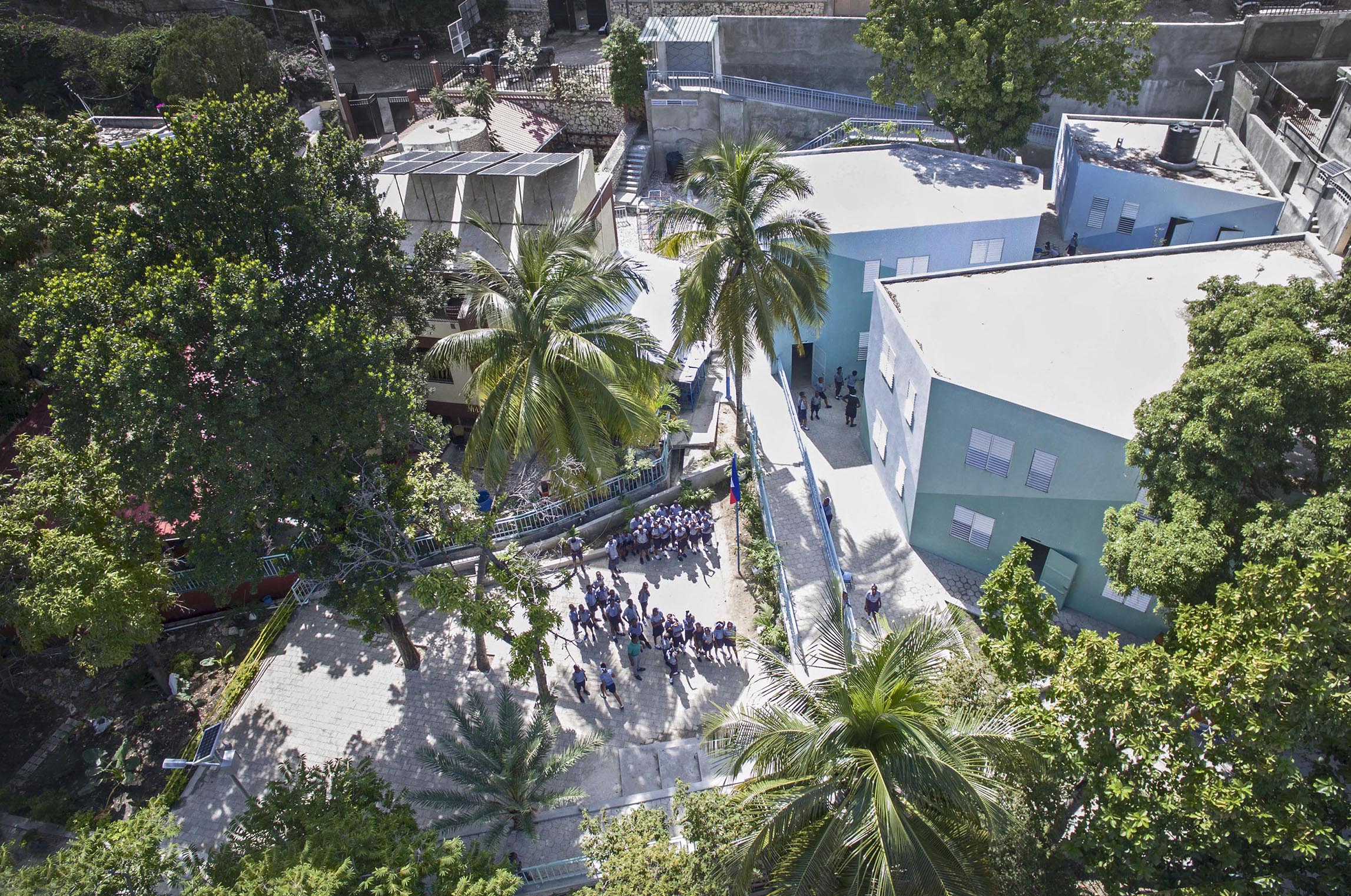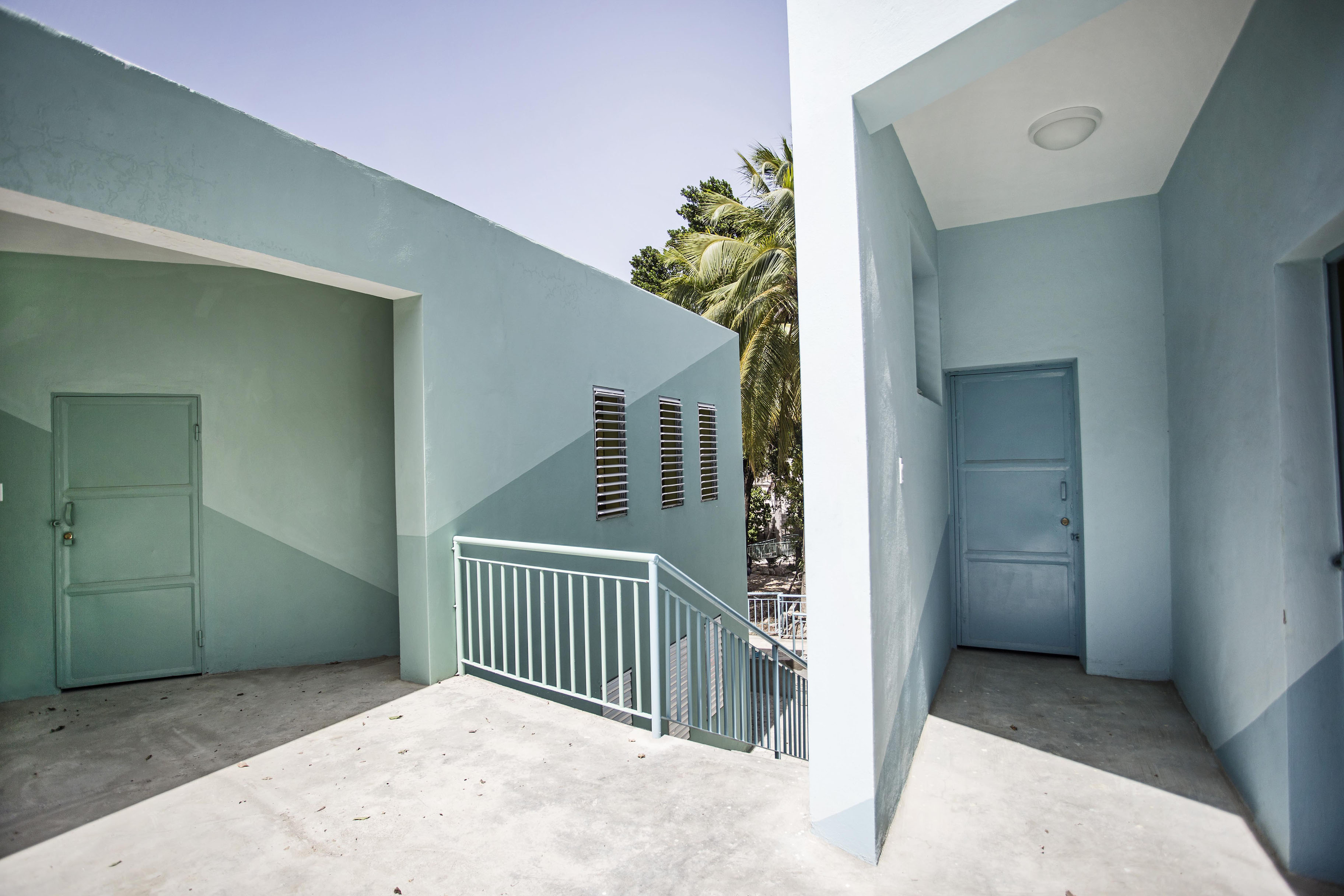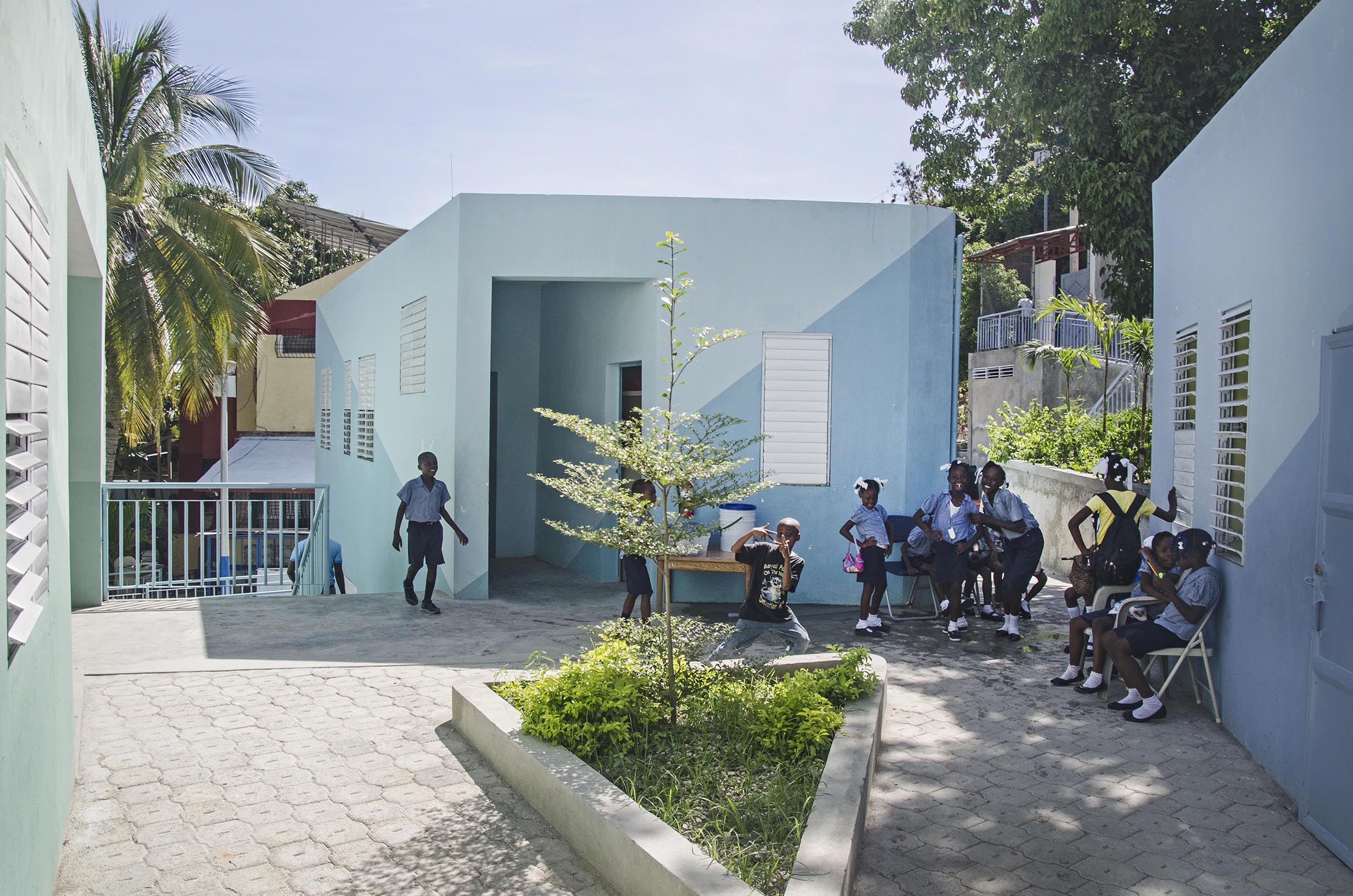Ecole de l'Espoir
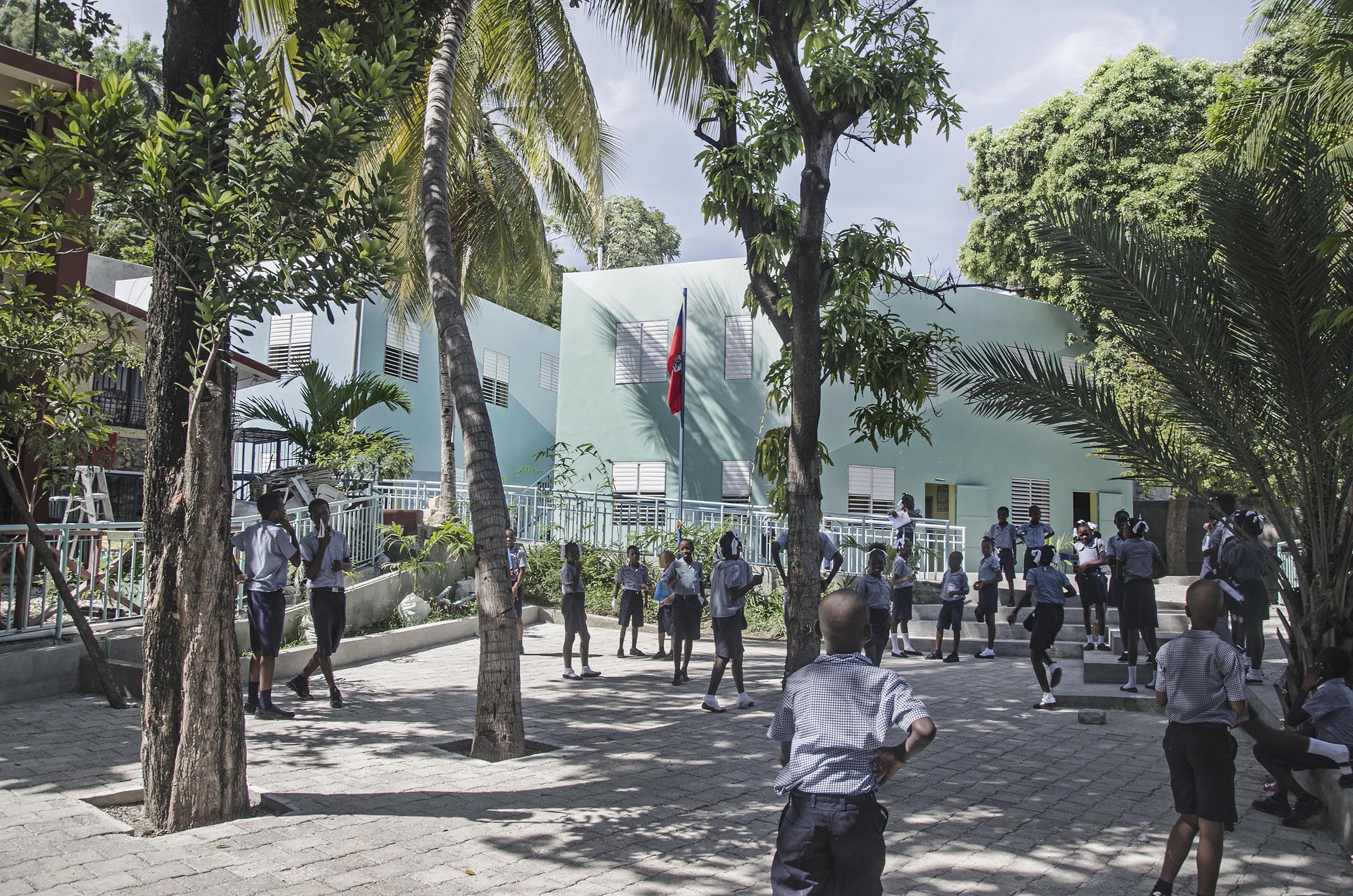
Project Details
£50,000 to £99,999
New Build
Located at the edge of Delmas 32, a slum neighbourhood of approximately 100.000 inhabitants in the centre of Port-au-Prince, Ecole de l’Espoir is a school aimed at extending educational services to vulnerable children of the surrounding area, including those with physical and cognitive difficulties. In informal urban areas in Haiti, schools, often run by privates or local associations, are to a large extend hosted in facilities initially built to serve as houses or churches, where national guidelines for schools are rarely respected. Compliance to structural safety and hygienic standards (they often lack of adequate sanitation) is insufficient, and classrooms result dark, overcrowded, and not ventilated. In Haiti, especially in urban informal contexts, children with special needs (including learning disabilities and behavioural issues) are prevented from receiving dedicated care or assistance. Often marginalised at school and in the community because of poverty or other special needs, these pupils are therefore denied their right to education and the consequent development opportunities. With the aim of building the new school as close as possible to the targeted community, J/P HRO was forced to opt for a small and extremely sloppy site (add ratio) due to the scarcity of land available in the neighbourhood (caused by a dense informal urbanisation). The design was aimed at maintaining the site's beautiful and extremely rich natural environment, and the decision to keep all the existing trees, along with the constraints of the natural topography, has suggested the idea to organise the site like a campus. Whilst the sloppy site has been shaped into different terraces to minimise groundwork and to reduce building costs, the architectural programme has been distributed in different pavilions articulated along an accessible ramp, the hearth of the project. The organisation of the pavilions around common courtyards and ramps allows ease of communication between the classrooms and administrative functions. With the goal of avoiding a physical separation among children with different abilities and providing an effective inclusive environment, the design has encouraged all pupils to use the ramps as the main means of navigating through the school site. These campus ‘streets’ take the place of traditional corridors and balconies, typical in Haitian schools. With astonishing views of the surrounding nature, both ramps and pocket courtyards shaded by existing Flamboyants act as recreational areas where communal life take place. The dual aspect of all classrooms guarantees cross natural ventilation and optimal daylight. The facades' patterns are intended at emphatising the geometry of the ramp and the campus in plan with a series of vibrant colours. Through an open conversation with the school committee and children, the chosen colours were aimed at providing the environment with a different colour palette, which in an informal neighbourhood is often cement-like due to a lack of resources for finishes. Since the end of its construction in May 2016, Ecole de l’Espoir provides quality education to over 200 children of Delmas 32 thanks to the initiatives of the Ray of Light Foundation and J/P HRO.
